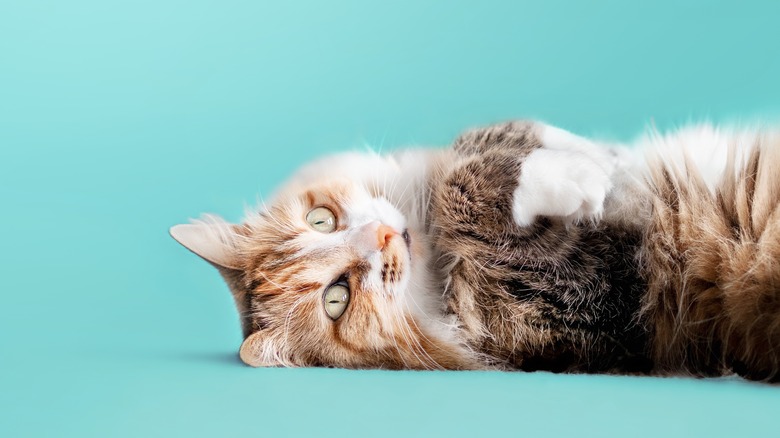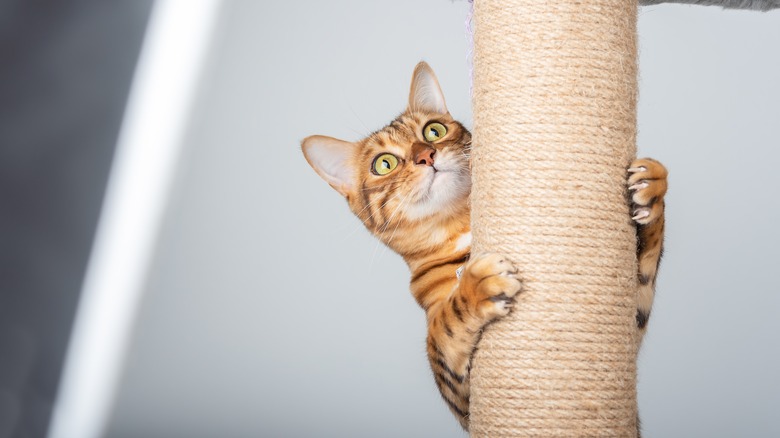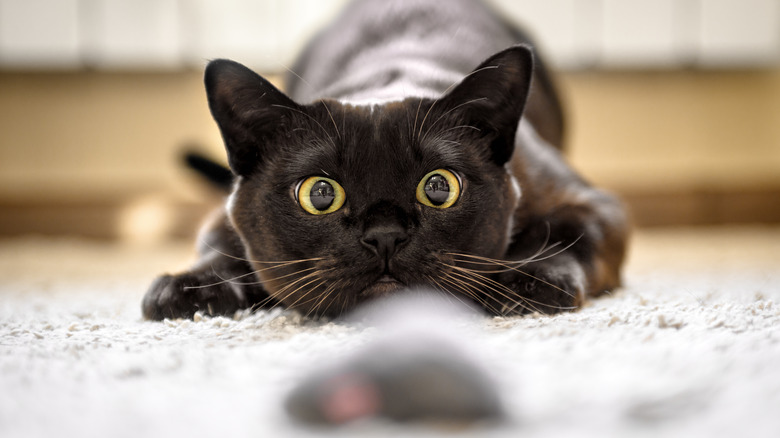The Deadly Trend Behind Australia's Push To Impose Nighttime Curfew For Cats
The cat: an apex predator as lazy as it is lethal. After all, there's no need to hunt all the time when feline genetics grant such killer instincts, agonizingly sharp claws, ultra-fast and flexible bodies suited perfectly to stalking and bounding, and all that adorable belly fuzz that you'd love to snuggle if only they didn't react by raking your face off.
Okay to be fair, not all cats are excellent hunters. Some of the domesticated variety prefer to stay bundled in bedsheets 24-7 like a person with a permanent flu and never venture outdoors. But cat owners will tell you that if a cat is an "outdoor cat," as we call them, good luck trying to stave off those predatory instincts. The cat might prowl for an hour and come back or stay out overnight and come back, and if they do return, they might be carrying a little rodential present, half-mangled and rotting. Appreciate it, little buddy. You're so thoughtful.
But can cats ever go overboard on the hunting? Are little felis catus — domesticated cats — actually decently murderous enough to raze the terrain of all manner of creatures small enough to fit between their teeth? How about we ask folks in Australia, a place not unaccustomed to savage beasts? As Smithsonian Magazine says, cats — feral more than housebound — have become something of a nuisance. More than that, they've started ruining the ecosystem, wiping out entire species, and have gotten in need of a curfew.
Incalculable fields of the mauled and the dead
So what are we talking about? Like ... a couple hundred dead birds? Maybe 2% of Australia's field mouse population? Oh you sweet, sweet summer child, you've never seen what cat claws can do to a stationary household object. Try 2 billion, as Smithsonian Magazine cites. That's 2 billion dead at the paws of housecats — and that's per year, not all together. Since cats were first introduced into an Australian ecosystem with no comparable predators about 230 years ago or so in 1788, they've spread to cloak 99.9% of the continent with their lethally cute presence and vaguely absent stares.
Cats being what they are and how they act, the real kitty culprits are feral cats that've either gone rogue or come from a line of renegades of decent human companionship. In his 2019 book "Cats in Australia: Companion and Killer" (per Smithsonian Magazine), John Woinarski, a conservation biologist at Charles Darwin University, said that the average number of Australian feral cats — 2.8 million — can swell up to 5.6 million during years with heavy rain. And we're not just talking about feral cats roving backyards, cityscapes, or the occasional rural dustbowl, but protected nature preserves. Christine Ellis, an Aboriginal Warlpiri ranger at Newhaven Wildlife Sanctuary in the Great Sandy Desert, says that she witnesses the aftermath of cat blitzkriegs on the regular and that over a dozen Indigenous Australian species have already vanished as a result.
Mandatory governmental curfews
What to do about the bottomless bloodlust of a creature as ravenous for pain as it is adorable to behold? Cats are beyond control, as owners still clinging to their skin will attest. Nonetheless, steps are being made to contain the fecundity of feral feline ferocity. The Australian Department of Environment, Water, and Heritage released a 2008 report proposing governmental intervention to protect natural "islands" of "high conservation value." The report urged data collection for the purpose of developing "contingency plans for preventing, monitoring and, if an incursion occurs, containing and eradicating feral cats."
A newer 2020 governmental committee discussed in Smithsonian Magazine included 200 submissions from researchers, conservationist groups, and animal welfare organizations and subsequently launched Project Noah to preserve Australia's wildlife not just from feral cats but also from pet cats. They recommended three courses of action to stem the carnage: registration for cats, mandatory spaying and neutering, and mandatory nighttime curfew. Biologist John Woinarski pointed out, however, that nighttime curfew won't save prey that are active during the day.
And yet, it's unclear whether or not these plans have been put into serious action. The emotional attachment between people and cats seems at least partially to blame, as the Australian government keeps getting pushback from individuals like Becky Robinson, president and founder of Alley Cat Allies. She calls any suggestion to kill feral cats "barbaric, reprehensible, and a morally flawed choice." Meanwhile, Australia's most dangerous invasive predator continues to prowl, and native species continue to dwindle.


